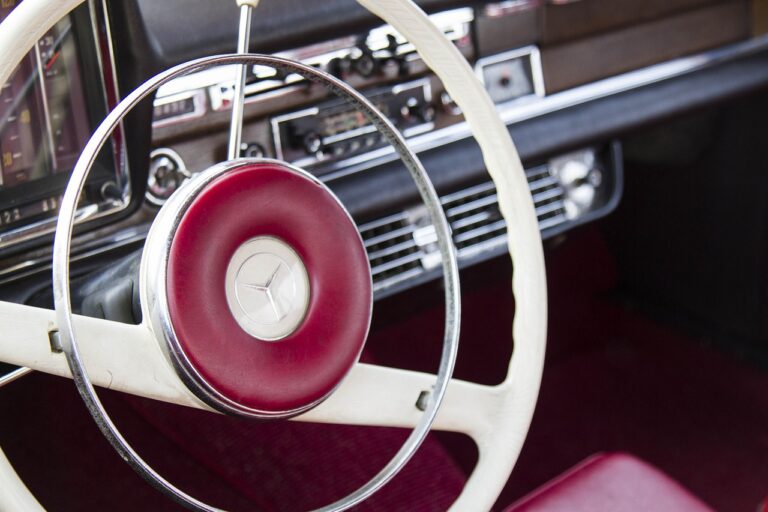Exploring the Integration of Piezoelectric Technology in Automotive Air Conditioning Systems
skyexchange, world 777, goldbet7:As technology continues to advance, automotive manufacturers are constantly looking for innovative ways to improve the efficiency and functionality of their vehicles. One area that has seen significant development in recent years is the integration of piezoelectric technology in automotive air conditioning systems.
Piezoelectric materials have the unique ability to convert mechanical energy into electrical energy, making them an ideal solution for improving the performance of air conditioning systems in vehicles. By integrating piezoelectric elements into the design of air conditioning systems, manufacturers can enhance energy efficiency, reduce overall system weight, and improve overall performance.
In this article, we will explore the integration of piezoelectric technology in automotive air conditioning systems, discussing the benefits, challenges, and future prospects of this innovative approach.
Improving Energy Efficiency
One of the primary benefits of integrating piezoelectric technology in automotive air conditioning systems is the potential for significant improvements in energy efficiency. Traditional air conditioning systems rely on mechanical compressors to cool the air, which can be energy-intensive and inefficient.
By incorporating piezoelectric elements into the design of air conditioning systems, manufacturers can reduce the reliance on mechanical compressors, leading to lower energy consumption and improved overall efficiency. Piezoelectric materials can be used to generate electrical energy from the vibrations of the vehicle, helping to power the air conditioning system without drawing additional energy from the engine.
Reducing System Weight
Another key advantage of integrating piezoelectric technology in automotive air conditioning systems is the ability to reduce overall system weight. Traditional air conditioning systems can be bulky and heavy, adding unnecessary weight to the vehicle and reducing fuel efficiency.
By replacing heavy mechanical components with lightweight piezoelectric elements, manufacturers can significantly reduce the weight of the air conditioning system, leading to improved performance and fuel efficiency. This reduction in weight can also help to improve vehicle handling and overall driving experience.
Enhancing Performance
In addition to improving energy efficiency and reducing system weight, integrating piezoelectric technology in automotive air conditioning systems can also help to enhance overall performance. Piezoelectric materials are highly responsive and can quickly adapt to changes in temperature and humidity, allowing for precise control of the air conditioning system.
This enhanced responsiveness can result in faster cooling times, improved temperature control, and a more comfortable driving experience for passengers. By integrating piezoelectric technology into air conditioning systems, manufacturers can provide drivers and passengers with a more efficient and reliable cooling solution.
Challenges and Future Prospects
While the integration of piezoelectric technology in automotive air conditioning systems offers numerous benefits, there are also challenges that manufacturers must overcome. One of the main challenges is the cost of implementing piezoelectric materials into the design of air conditioning systems, as these materials can be expensive to produce and integrate.
Additionally, there may be technical challenges related to the durability and reliability of piezoelectric elements in automotive applications. Manufacturers will need to conduct extensive testing and research to ensure that piezoelectric technology can withstand the harsh conditions of daily driving and provide long-lasting performance.
Despite these challenges, the future prospects of integrating piezoelectric technology in automotive air conditioning systems look promising. As technology continues to advance and costs decrease, we are likely to see increased adoption of piezoelectric materials in a wide range of automotive applications, including air conditioning systems.
FAQs
Q: How does piezoelectric technology work in automotive air conditioning systems?
A: Piezoelectric materials have the unique ability to convert mechanical energy into electrical energy when they are subjected to mechanical stress or vibration. In the context of automotive air conditioning systems, piezoelectric elements can generate electrical energy from the vibrations of the vehicle, helping to power the air conditioning system without drawing additional energy from the engine.
Q: What are the main benefits of integrating piezoelectric technology in automotive air conditioning systems?
A: Some of the main benefits of integrating piezoelectric technology in automotive air conditioning systems include improved energy efficiency, reduced system weight, and enhanced performance. Piezoelectric materials can help to reduce the reliance on mechanical compressors, leading to lower energy consumption and improved overall efficiency. Additionally, by replacing heavy mechanical components with lightweight piezoelectric elements, manufacturers can reduce the weight of the air conditioning system, improving performance and fuel efficiency.
Q: What are the challenges of integrating piezoelectric technology in automotive air conditioning systems?
A: Some of the challenges of integrating piezoelectric technology in automotive air conditioning systems include the cost of implementing piezoelectric materials, technical challenges related to durability and reliability, and the need for extensive testing and research to ensure long-lasting performance in harsh driving conditions. Manufacturers will need to overcome these challenges to fully realize the potential benefits of piezoelectric technology in automotive applications.
In conclusion, the integration of piezoelectric technology in automotive air conditioning systems offers a range of benefits, including improved energy efficiency, reduced system weight, and enhanced performance. While there are challenges that manufacturers must overcome, the future prospects of this innovative approach look promising. As technology continues to advance and costs decrease, we are likely to see increased adoption of piezoelectric materials in automotive applications, paving the way for more efficient and sustainable air conditioning systems in the future.







